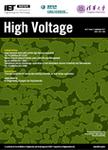Effects of ambient humidity and thermal aging on properties of Nomex insulation in mining dry‐type transformer
作者机构:Shanxi Key Laboratory of Mining Electrical Equipment and Intelligent ControlCollege of Electrical and Power EngineeringTaiyuan University of TechnologyTaiyuan ShanxiChina Zhengzhou Power Supply CompanyState Grid Henan Electric Power CompanyZhengzhou HenanChina Jinzhong Power Supply CompanyState Grid Shanxi Electric Power CompanyJinzhong ShanxiChina
出 版 物:《High Voltage》 (高电压(英文))
年 卷 期:2021年第6卷第1期
页 面:71-81页
核心收录:
学科分类:080801[工学-电机与电器] 0808[工学-电气工程] 08[工学]
基 金:National Natural Science Foundation of China Grant/Award Number:51577123
摘 要:Temperature and humidity are the main factors that cause the decomposition of Nomex paper widely used as turn‐to‐turn insulation material of mining dry‐type transformers. In this study, for understanding the effect of ambient humidity and thermal aging on the properties of Nomex paper, specimens with the initial moisture content of 7% were aged in the oven for 168, 504, 672 h at 180°C, respectively. After thermal aging, corona discharge experiments of unaged and aged specimens with different aging degrees were carried out at different relative humidity (RH) levels from 10 to 70%. The characteristic parameters of corona discharge, such as the average discharge amplitude and the number of discharges, were measured. Then, the surface conductivity and the surface potential decay rate were measured. The morphology and attenuated total internal reflectance Fourier transform infrared spectroscopy were also analysed for explaining the difference of properties be-tween unaged and aged specimens. The experiment results indicate that the average discharge amplitude decreases with the increase of RH or the deepening of the aging degree of specimens, but the number of discharges shows the reversal tendency. The changes in the physical structure and chemical composition, which is induced by the hydrolysis reaction of Nomex paper, accelerate the surface potential decay and increase the surface conductivity.



